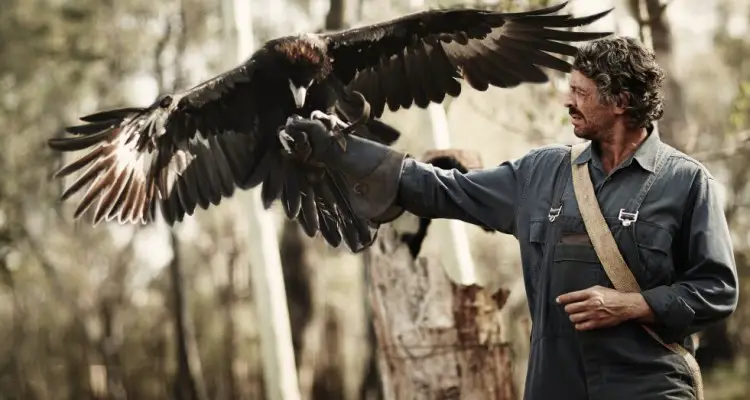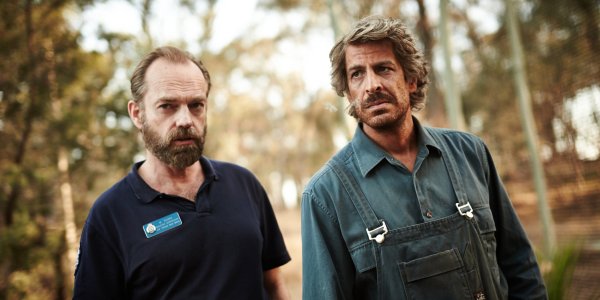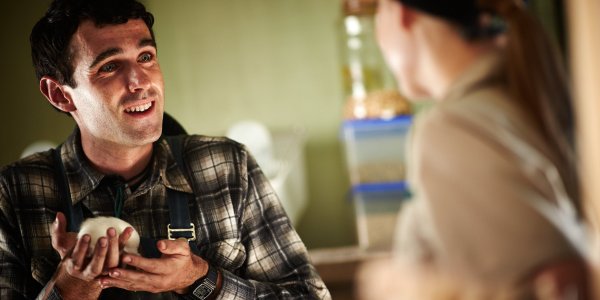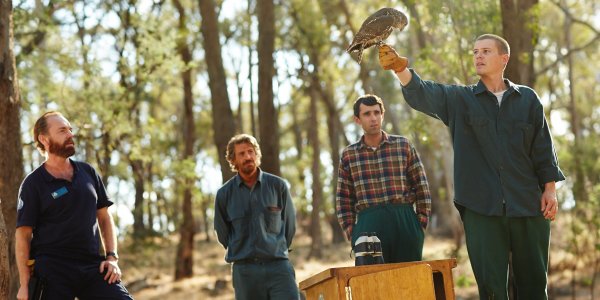HEALING Is Not Your Average Prison Film

Manon de Reeper is the founder and CEO of Film…
Healing is an Australian movie about the people in a low-security prison, who are all trying to find their ways in life. The main character, Viktor Khadem (Don Hany), killed his best friend when he was drunk and has been in prison for over sixteen years. Finally, he has made his way into a low-security, pre-release prison, where he will be trained and prepared or return into the real world. His case manager, Matt Perry (Hugo Weaving) decides to trust Khadem despite his bad track record, and assigns him to the newly founded bird nursery, where the prisoners have to nurse injured game birds back to good health.
The director of the film, Craig Monahan, attended the Perth premiere of Healing, and he took the time to answer a few of the audience’s questions. He gave us a unique insight of how the movie was made and what the challenges were. They shot the film in as few as 20 days – can you imagine how tough a challenge that must’ve been while working with strong, fierce birds like eagles and owls?
Furthermore, he told us he was inspired to write this script, which he worked on for years with co-writer Alison Nisselle, by a little article he read in the newspaper, which basically told the story of Viktor Khadem. He visited that man in prison, and other prisons as well, to get a first-hand idea of what such an environment is like.
As Monahan said, “Healing is not the prison movie we’ve already seen a thousand times before”, and it truly isn’t. There are no evil wardens, no outbreaks, no riots. This movie took on the daunting task of showing that not all prisoners are inherently evil and that these people can change, if given the proper care.
A Treat For The Senses
Healing took my breath away. The sceneries of the Australian country, frequently shot from a bird’s point of view, were gorgeous, and made me awfully proud of having moved to such an amazingly beautiful country. Every close-up shot of the eagle gave me goose bumps, just like every close-up of the little white owl made me laugh. The creatures were truly magnificent and they made perfect use of their striking physiques. Moreover, the birds served as beautiful allegories: as the birds were nursed back to health, back to flying strength, the prisoners too were “nursed back to health”, until they could fly into freedom again.
Khadem was paired with one bird in particular, which would be his sole responsibility of nursing back to health. He named her Jasmine. Monahan told us that due to the short time they had to shoot the film, they just continued filming even if the birds didn’t behave as they wanted them to. Hany would spend a lot of time with the birds to get used to them, and they to him. They had tons of extra footage of the eagles (they used three eagles to play Jasmine), and edited in the right shots after they finished shooting.

It looks as if the birds constantly react to the people in the scenes, to what they say and do, even if that wasn’t actually the case at the time of shooting. It must be said: the whole film was edited seamlessly. The result was remarkable, it’s very impressive, and Monahan, too, sang his praise for editor Suresh Ayyar.
The music was on point: soft, tribal music guided the film, which befitted not only the fiery nature of the birds, but the prisoners’ stories and the rugged but beautiful country views, as well. What made the movie all the more special were the diegetic sounds – in the background, the kookaburras, c*ckatoos and ravens made their presence known. I hear these sounds every day, nowadays, and gave me a feeling of “home”. I’m sure, though, that for those who haven’t ever been to Australia, these birds’ calls sound exotic, even strange.
The movie’s characters all felt real – they struggled with real issues and wanted to get out of prison in a proper way, not by escaping or rioting or killing some warden. Their issues evolved around family, friends and trust, and, of course, themselves. During the movie they had to learn to stand on their own feet again, to find trust in their families or forgive themselves to allow themselves to be with their family again. Even the warden, Matt Perry, was struggling to find a way to get over past horrors, and to get on with life. Their lives were all thoroughly interconnected and they all had to help each other, consciously or subconsciously. For such a male dominant film and environment, the story was unusually emotional and sensitive, which goes very much against the grain of what we know of most prison films.

As for the acting performances, especially Hugo Weaving as the warden and Shane, played by Mark Leonard Winter, stood out to me. Weaving is a brilliant actor and no matter what kind of role he plays, he always plays it with dedication and finesse. Winter was a new face for me, and while I found his character fairly annoying (which was the goal), he played him convincingly. The role was not an easy one – he had some of the toughest scenes to play and his character had some of the toughest issues to work through. His performance was impressive indeed.
The Less Impressive
As for elements I liked less: the movie occasionally moved slowly, especially during long, dragged-out dialogues. Furthermore, I have to admit I was not impressed with Don Hany’s performance as the main character, Viktor Khadem. This was Hany’s first ever performance in a feature length film, his former experience lying in television work. The character of Viktor Khadem was an Iranian, while he himself is an Australian, like the rest of the cast. At the very least, he should have gotten more accent training.
However, I can’t put the blame Don Hany alone – as I see it, it was in poor taste to have the main character be a Muslim, an Iranian, to begin with. Why could the worst, most fearsome prisoner of them all not just be an Australian, too, like the rest? Despite the fact Healing had such surprisingly progressive elements (as mentioned before, emphasis on emotion in the male dominant environment, showing convicts can still change and are not inherently bad and are just people, et cetera), this tired portrayal of the Muslim as the ultimate “other” was unfortunate and disappointing.
The Prison System
As I’m writing this review, I read the news message about the US having force-fed a Guantánamo Bay detainee and filmed it. Those are exactly the kind of messages we’re used to hearing in the news; they’re the stories of prison movies we’re used to seeing. Prison is a sword with a double edge: on the one hand, the concept of prison satisfies the idea of criminals “getting what they deserve”, on the other, treatment in prisons is often dehumanizing and destructive; especially for the hope to ever lead a normal life again after release.
In the movie, it’s suggested that after release, Viktor Khadem could start working with the organization that coordinated the bird program in the movie. After the movie, someone in the audience asked Monahan whether prisoners could ever work with an organization like that, after release, in reality. He told us: “no, because these organizations are governmental and they can never work for the government”. It’s sad, but true, and a very harsh reality.

All over the world, programs such as the one in Healing exist to help convicts get back on their feet and improve their chance of a successful re-entry into society. Healing tells the story we never hear of in the news or see in the movies: where projects that help convicts are successful, that convicts are as human as the rest of us, and that they do deserve to be treated as such. For engaging in this daunting task of showing the audience, I can only applaud director Craig Monahan.
All in all, Healing is a beautiful movie, not only for its cinematography, scenery and birds, but also to see a different side of the prison system: where there is hope instead of fear. Occasionally, Healing may drag a bit and the main character may be a Muslim, as cliché as it is, but the movie is well worth the watch – I can thoroughly recommend it.
Does content like this matter to you?
Become a Member and support film journalism. Unlock access to all of Film Inquiry`s great articles. Join a community of like-minded readers who are passionate about cinema - get access to our private members Network, give back to independent filmmakers, and more.
Manon de Reeper is the founder and CEO of Film Inquiry, and a screenwriter/producer. Her directorial debut, a horror short film, is forthcoming in 2021.













